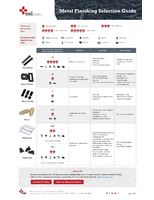NTSB makes safety recommendations to FAA.
Share:
Press Release Summary:
According to NTSB, Federal Aviation Administration should consult with appropriate specialists and revise current internal guidance on issuance of medical certification subsequent to ischemic stroke or intracerebral hemorrhage. FAA should also correct deficiencies with in-service automated weather sensor system stations, and implement collaborative test program in Alaska to establish viability of relaying weather information collected from airborne aircraft equipped with data-link technology.
Original Press Release:
NTSB Safety Recommendation A-11-48 through -51
The National Transportation Safety Board makes the following recommendations to the Federal Aviation Administration:
Consult with appropriate specialists and revise the current internal Federal Aviation Administration guidance on issuance of medical certification subsequent to ischemic stroke or intracerebral hemorrhage to ensure that it is clear and that it includes specific requirements for a neuropsychological evaluation and the appropriate assessment of the risk of recurrence or other adverse consequences subsequent to such events. (A-11-48)
Correct the deficiencies with the in-service automated weather sensor system (AWSS) stations, specifically the known problems with present weather sensors and ceilometers, to ensure that the AWSS stations provide accurate information as soon as practical. (A-11-49)
Implement a collaborative test program in Alaska between the Federal Aviation Administration, the National Weather Service (NWS), the local academic community, and private entities to establish the viability of relaying weather information collected from airborne aircraft equipped with existing data-link technology, such as universal access transceivers, to the NWS Alaska Aviation Weather Unit in real-time. (A-11-50)
If the Federal Aviation Administration?s test program recommended in Safety Recommendation A-11-50 establishes that the use of existing data-link technology, such as universal access transceivers, is a viable means of relaying collected information in real-time from an airborne platform, encourage and provide incentives to data link- equipped aircraft operators in Alaska to outfit their aircraft with weather-sensing equipment for real-time data relay. (A-11-51)
http://ntsb.gov/Recs/Letters/2011/A-11-048-051.pdf




